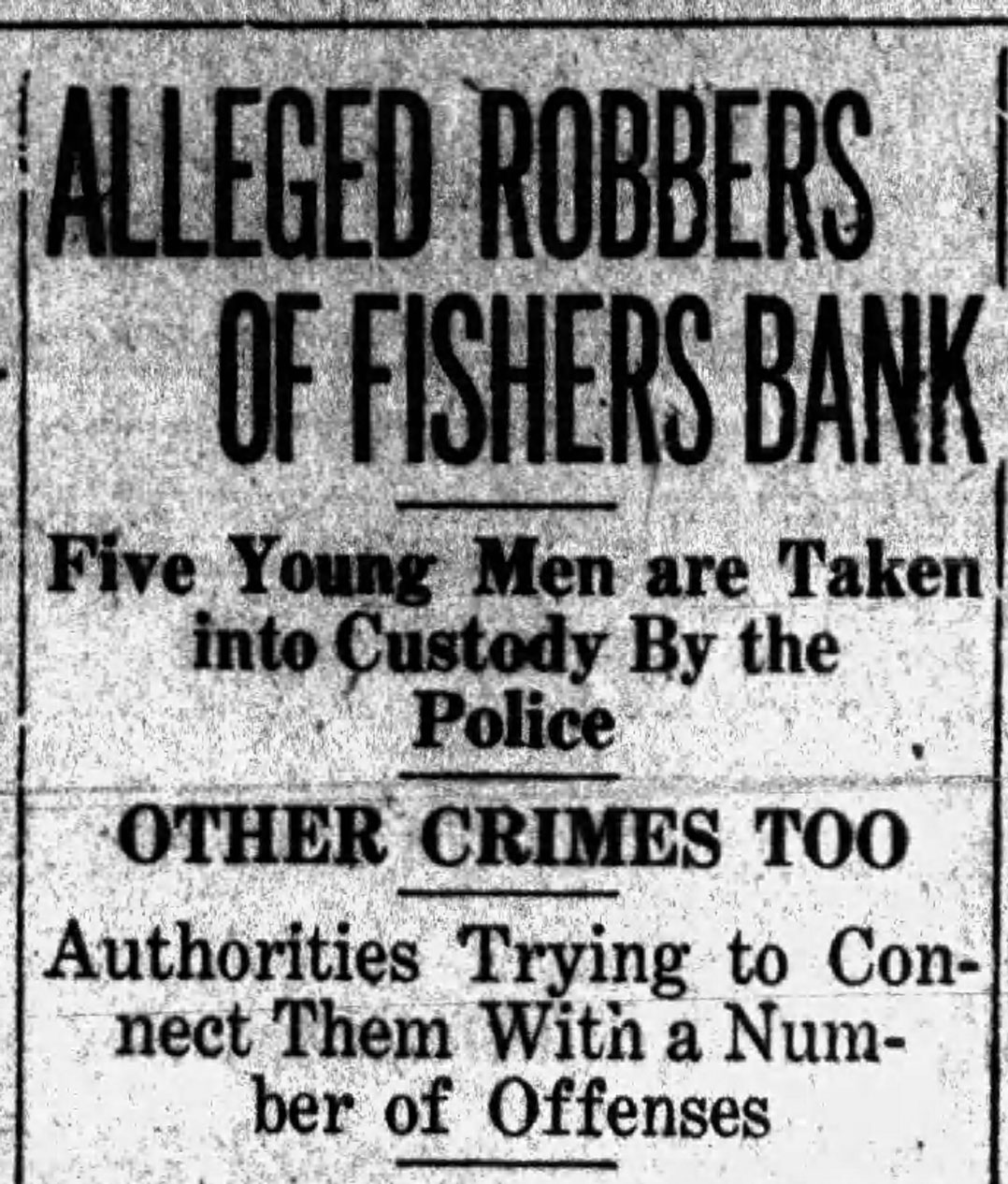Commentary by Robert Bowling
“Baby Face” Nelson. Harry Pierpont. John “Red” Hamilton. These were just a few members of the infamous Terror Gang led by Indiana native John Dillinger. They were responsible for a string of bank robberies that utilized force and violence. During the 1920s and ‘30s, the FBI saw a significant increase in bank robberies due to Prohibition and the Great Depression.
The Dillinger gang never robbed any banks in Hamilton County but that didn’t stop other gangs that operated in the area. Although the Dillinger gang preferred violence, other gangs found it easier to rob banks after they were closed. Banks had alarm systems, but they were very primitive. They lacked surveillance cameras, dye packs or GPS devices used by modern banks. Therefore, banks had to ensure that the blast-proof vault would protect their assets.
In February 1920, the Fishers National Bank was burglarized. The thiefs broke into the bank and successfully burned through the outer door of the bank vault. There was a small safe inside the vault, which they tried to burn through, as well, but were unsuccessful. They broke into three safety deposit boxes and took three revolvers, 7 cents and a typewriter. Five men, ages 18 to 21, operating as part of a gang were arrested in Indianapolis.
It is worth noting that during this time, bank robbery was still a state crime. It was up to the local authorities and the banking associations to investigate. It didn’t become a federal crime until 1935 with the creation of the FDIC. Banks had to carry private insurance to ensure that their customers’ money was safe, which is another reason why banks advertised the features of their vault as much as they did their interest rates.
The vault did its job this time, but the next time, addressed in the next article in this series, would be different.



